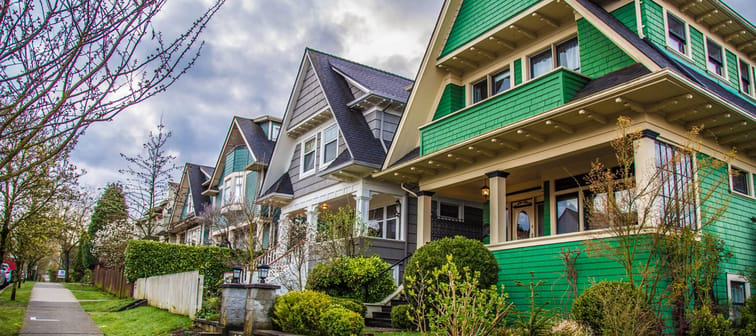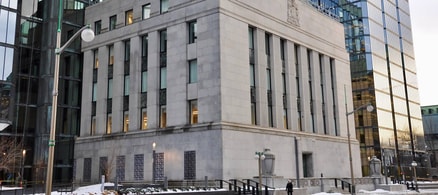How rising interest rates affect your monthly payments
To begin, there are two types of variable-rate mortgages: fixed payment and adjustable rate mortgages.
With a fixed payment variable-rate mortgage, your monthly payments stay the same each month. When rates rise and fall, what changes, is the amount of your payment that goes toward interest.
As rates increase, more of your payment goes toward interest, instead of your principal. This extends your amortization schedule, which is the length of time it will take to pay off your property. Eventually, you’ll hit your trigger rate, which is where your interest payments exceed your total payments. When that happens, your lender will require you to adjust your payment amount, so you’re back to building equity.
With adjustable-rate mortgages (ARM), the amount you’re paying monthly increases or decreases based on your lender’s prime rate. For example, if your ARM is prime -1 and your bank’s prime rate is three per cent, your mortgage payment would be calculated at one per cent.
Now let’s see how rising interest rates would affect a homeowner with a $500,000 ARM on a 25-year amortization schedule. We’ll assume that they’re on monthly payments:
- 2% interest rate — $2,117.26
- 3% interest rate — $2,366.23
- 4% interest rate — $2,630.10
- 5% interest rate — $2,908.02
- 6% interest rate — $3,199.03
In this scenario, if the homeowner started their ARM at two per cent, and they were now at five per cent, their payments would have increased by nearly $800. Another one per cent increase and the difference would be over $1,000.
Every mortgage is different. Each lender sets its own prime rate and offers homeowners different discounts when taking a variable-rate mortgage. The example above shows how increasing rates would have affected your mortgage as rates continue to climb.
How to decide if it’s time to lock in
While every situation is different, many people chose a variable-rate mortgage because they believed it would save them money. The idea is that they could stomach any changes over the term of their mortgage.
However, in the current interest rate environment, those who went with a variable are now paying more than the fixed rates they originally offered. No one likes to be on the losing side of a bet, so you need to look at your individual situation to decide what’s best for you.
If your monthly payments are causing you to lose sleep every night, then it’s probably best for you to switch to a fixed-rate mortgage before the interest rate announcement. This will allow you to lock in a rate for the next five years. Since interest rates are expected to rise in a few days, it would likely only take one more interest rate increase for you to break even or come out ahead.
Most lenders will happily convert your variable-rate mortgage to a fixed rate without any additional fees, since you’ll be locking in with them.
You shouldn’t feel like you “lost” by switching to a fixed rate. Think of it this way. You originally thought you could handle the volatility of a variable rate, but you’ve learned that it isn’t for you. Locking in now gives you peace of mind.
On the other hand, if you currently have a variable-rate mortgage and only have one or two years left on your term. It could make sense to ride things out. That’s because you would have already had a few years where you were on the right side of interest rates. Going fixed now would lock you in at a higher rate. Since you’ll need to renew anyways, you may as well see where things go.
One thing to note. If you do decide to switch to a fixed-rate mortgage, and need to break your mortgage later, the fees will usually be more than what a variable rate would charge. In other words, staying on a variable could be beneficial if you need to break your mortgage before the term is up.
What other options do you have?
Converting to a fixed-rate mortgage with your current lender or riding out variable rates are just two options you have. There are two other paths you could take, but they may not necessarily be better.
One option is to break your variable-rate mortgage contract, pay the penalty, and then get a new variable-rate mortgage. This would only be better if the new variable rate mortgage offers a bigger discount than you’re already getting.
The other option is to break your mortgage, pay the penalty, and get a new fixed-rate mortgage with a different lender. This could work to your advantage if other lenders are offering better fixed-rate mortgages compared to your current lender. Of course, you do need to factor in the penalty you’d have to pay to see if the overall savings is worth it.
Seek advice from a professional
Even though rates are expected to go up shortly, no one knows what the future holds. If you’re concerned about future payments and your budget, it’s likely worth it to lock in now. The benefits of knowing exactly what your monthly payments are for the next five years with a fixed-rate mortgage can trump any savings you may get from a variable one.
However, it’s always in your best interest to talk to a mortgage specialist or broker, as they can help you understand what options you have while finding a solution that’s ideal for your situation.





